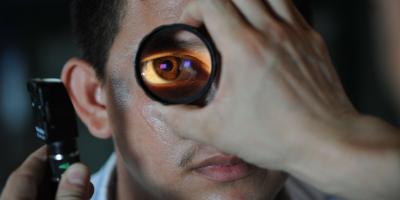A rash, a splitting headache or permanent liver damage – these are some examples of adverse drug reactions. Now an ADR can be reported not only by physicians or pharmacists, but also by patients. This can help save other patients from complications connected with using drugs.
In line with the current definition, “adverse drug reaction" is any unbeneficial and unintentional effect of a given drug, irrespective of whether the drug were used in accordance with recommendations, or if it were used in violation of its purpose and characteristics.
OBSERVE AND INFORM
You have to be aware of a potential ADR in respect of administering or taking any drug. In order to minimise this threat, every country maintains a drug-safety-monitoring system.
In Poland the monitoring of ADR’s is one of the responsibilities of the Office for Registration of Medicinal Products, Medical Devices and Biocidal Products (URPL). Its tasks also include the collection of reports and information on ADR’s, supervising the safety of drug administration and keeping the Central Record of Adverse Drug Reactions.
The URPL enters any such case into the European EudraVigilance database within 15 days – in cases of severe complications; or within 90 days – in cases of less serious complications. The Office can also download from the database information submitted by foreign institutions.
WHOM TO REPORT TO?
The Polish Pharmaceutical Law was amended in November 2013, owing to which also patients obtained the right to report ADR’s. Previously, only physicians, dentists and pharmacists had the obligation to do so.
Patients can report ADR’s to medical professionals, that is to paramedics, nurses, midwives, medical assistants, lab diagnosticians and pharmacy technicians. Additionally, they can report any incident of ADR’s directly to the URPL, as well as to entities responsible for the marketing of a medicinal product, i.e. to pharmaceutical companies.
The discussed solution is aimed at increasing the average detection of ADR incidents from ca. 3 thousand to approximately 20 thousand a year by 2022. This, in turn, will result in a decrease in the number of drug-induced complications and deaths caused by ADRs.
WHAT SHOULD BE INCLUDED IN THE REPORT?
The URPL has already launched a website on www.dzialanianiepozadane.urpl.gov.pl, which features, among other things, tips concerning filing an ADR report, a form, and the description of the ADR-collection system.
In order for your report to be valid it has to include the name of the drug, the description of the adverse drug reaction (at least one symptom), information on the patient (name initials, gender or other identification data), information on the reporting person (name and contact data – address, telephone, fax, e-mail).
The Office also asks everyone to submit as detailed a description as possible, which is necessary to establish a cause-effect relationship between the drug and the reaction.
The occurrence of an ADR can stem not only from the preparation’s properties (its chemical structure, level of purity and additional substances) or interaction with other drugs, but also from the characteristics of the patient (age, gender, genetic load, lifestyle, some pathological processes). Therefore, it is important to include information on simultaneously-taken drugs, the patient’s medical history, and any cases of allergic reactions.









Comments (0)